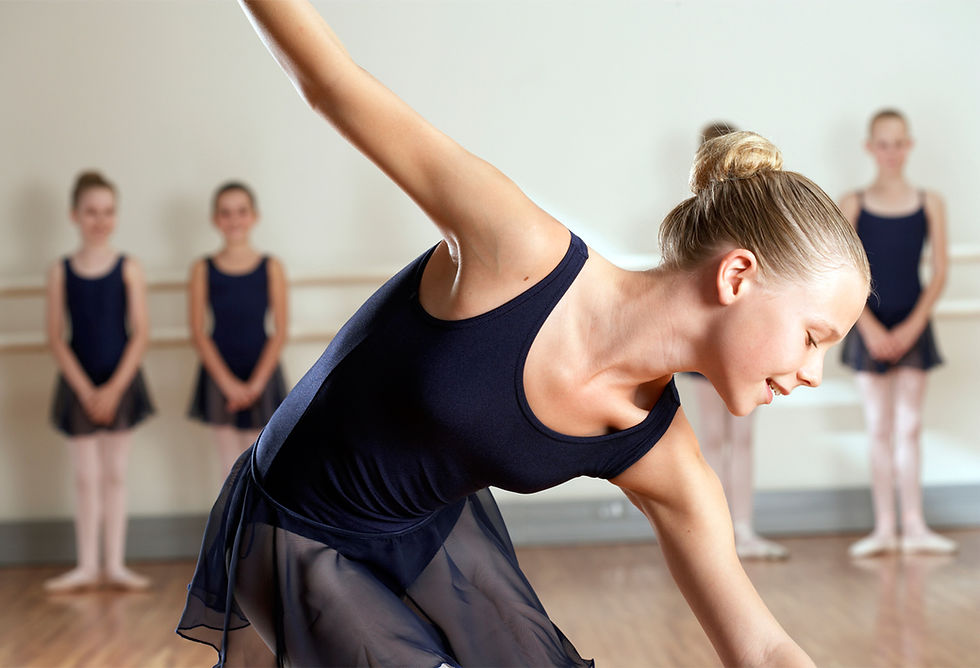The Art of Choreography: How to Create a Dance Piece
- Jess Keene

- Apr 25
- 3 min read
Creating a dance piece is one of the most rewarding parts of being a dancer or teacher. It’s where movement meets music, and ideas come to life on stage. Whether you’re choreographing a solo, duet, or full group routine, the process is all about creativity, storytelling, and connection. Here's a simple guide to help you understand the steps involved in choreographing your own dance piece.
Find Your Theme or Story
Every great piece starts with a clear idea. Think about what you want your dance to say or feel like. Ask yourself:
What emotion do I want to express? (Joy, strength, sadness, excitement?)
Is there a message or story I want to tell?
Am I inspired by a memory, a piece of art, or even a moment in nature?
Your theme doesn’t have to be complicated—just something that feels real to you or your dancers.
Choose the Right Music
Music is the heartbeat of a dance. Once you’ve got your theme, start searching for music that matches the mood. Consider:
Lyrics – Do the words support your message?
Tempo – Is it slow and emotional, or upbeat and powerful?
Dynamics – Does the music give you room to play with soft and strong moments?
Don’t rush this step. Listen to a few options, and go with the one that makes you want to move.
Map Out the Structure
Before jumping into movement, plan out the structure of your dance. Break the music into sections:
Intro
Verse
Chorus
Bridge
Finale
Think about how each section can build or change. Maybe you start soft and slow, then build to a big, bold finish. Having a rough outline helps keep the choreography balanced and clear.
Start Choreographing
Now comes the fun part—creating the movement! You can start at the beginning of the music or with the section you feel most inspired by.
Tips:
Use your theme to guide your movements. If your piece is about confidence, use strong, grounded steps. If it's about sadness, think of softer, slower movement.
Keep it simple at first. Focus on clean, clear movement that your dancers can perform well.
Play with levels (high, medium, low), dynamics (fast, slow, sharp, smooth), and space (where dancers move on stage).
Record yourself as you create so you don’t forget anything!
Teach It Clearly
Once your choreography is ready, it’s time to teach it. Break it down slowly, count it out, and demonstrate each move clearly. Things to keep in mind:
Use counts or lyrics to help dancers remember the steps.
Focus on timing and transitions.
Give your dancers space to make the movements their own—it helps bring the piece to life.
Rehearse, Refine, Repeat
Rehearsals are where the piece truly comes together. Watch how your dancers move, and don’t be afraid to make changes if something doesn’t look right or feel strong.
Use this time to:
Clean up timing and spacing.
Add facial expressions and performance quality.
Practice entrances, exits, and stage positions.
The more you run it, the more confident your dancers will feel.
Bring It to the Stage
When the dance is finished and rehearsed, it’s time to perform! Watching your choreography come to life on stage is such a proud moment. Whether it’s a small studio show or a big performance, seeing your vision become reality is what choreography is all about.
Choreographing a dance isn’t just about stringing together steps. It’s about creating a piece of art that makes people feel something. At Sarah-Louise Ashworth School of Dance, we love encouraging creativity, and we believe anyone can be a choreographer with the right guidance and a little imagination.
So go ahead—start with a feeling, find your music, and let the movement flow. Your story is worth dancing.

.png)





Comments